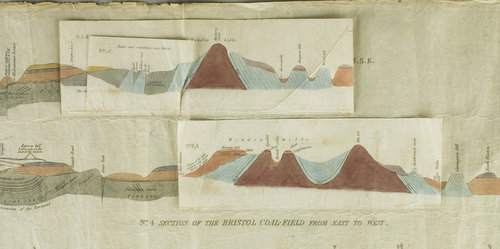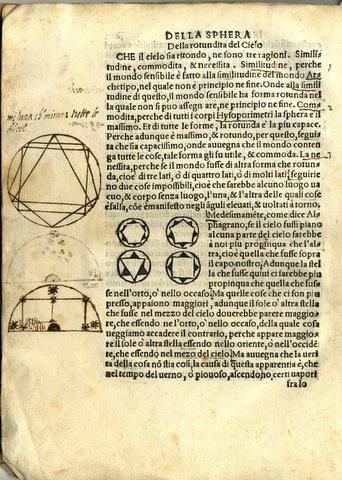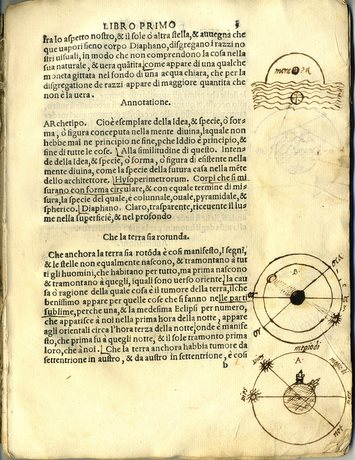Volvelles are one of the oldest forms of movable parts in books. According to the Oxford English Dictionary, volvelle is from medieval Latin volvella or volvellum, most likely from the Latin verb volvĕre, “to turn.” The OED defines volvelle as “an old device consisting of one or more movable circles surrounded by other graduated or figured circles, serving to ascertain the rising and setting of the sun and moon, the state of the tides, etc.”
In Early Modern times, volvelles were used especially to illustrate principles of navigation and astronomy. These “movable circles” were generally constructed of paper and attached to the book page using thread or, sometimes, glue. “Because of the precision required to record accurately certain types of data–charting a lunar eclipse, measuring nautical distance or calculating a mathematical equation, for instance–such disciplines were believed to be well served by the volvelle’s capacity for both rigorous alignment and reliable precision.” (Helfand, Jessica. 2002. Reinventing the Wheel. New York: Princeton Architectural Press, pp.18-19.)
The Claremont Colleges Library Special Collections has several examples of volvelles in Early Modern texts and at least one 2014 publication. Here are images of volvelles from some of those texts.
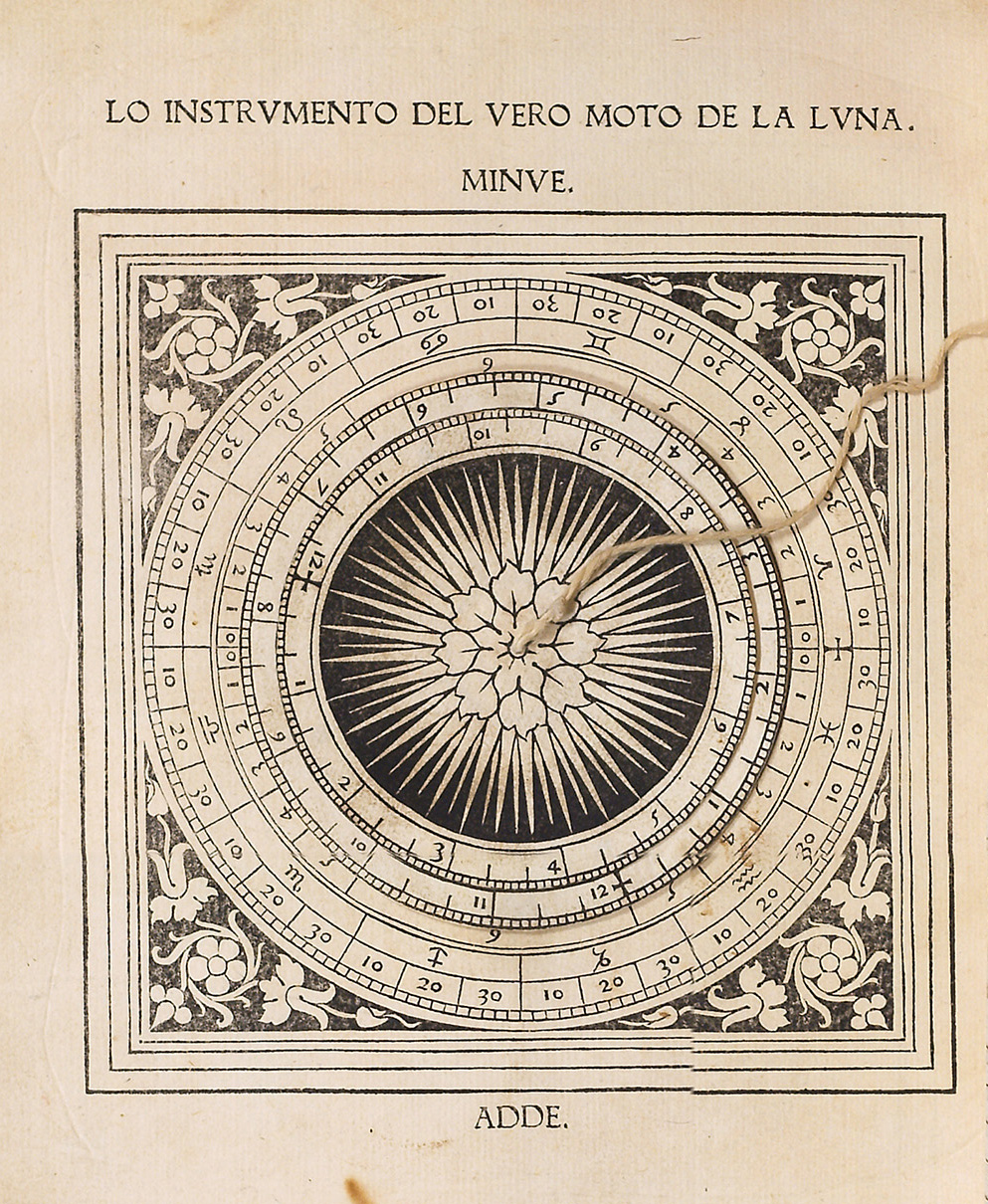
Calendarium. Joannes Regiomontanus. [Venice]: Bernhard Maler (Pictor), Erhard Ratdolt, and Peter Löslein, 1476.
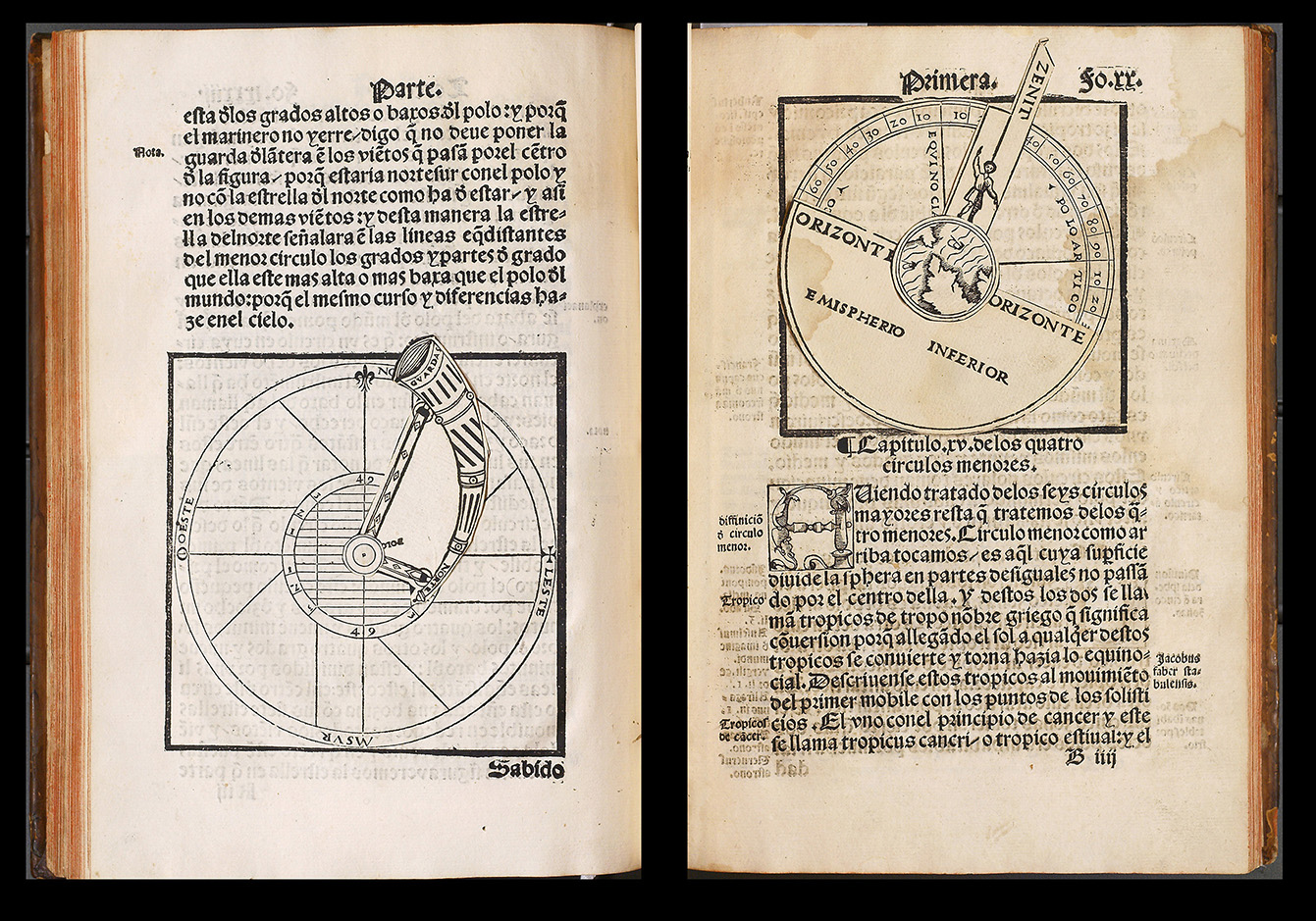
Breue compendio de la sphera . . .Martin Cortes. [Seuilla], [1551].
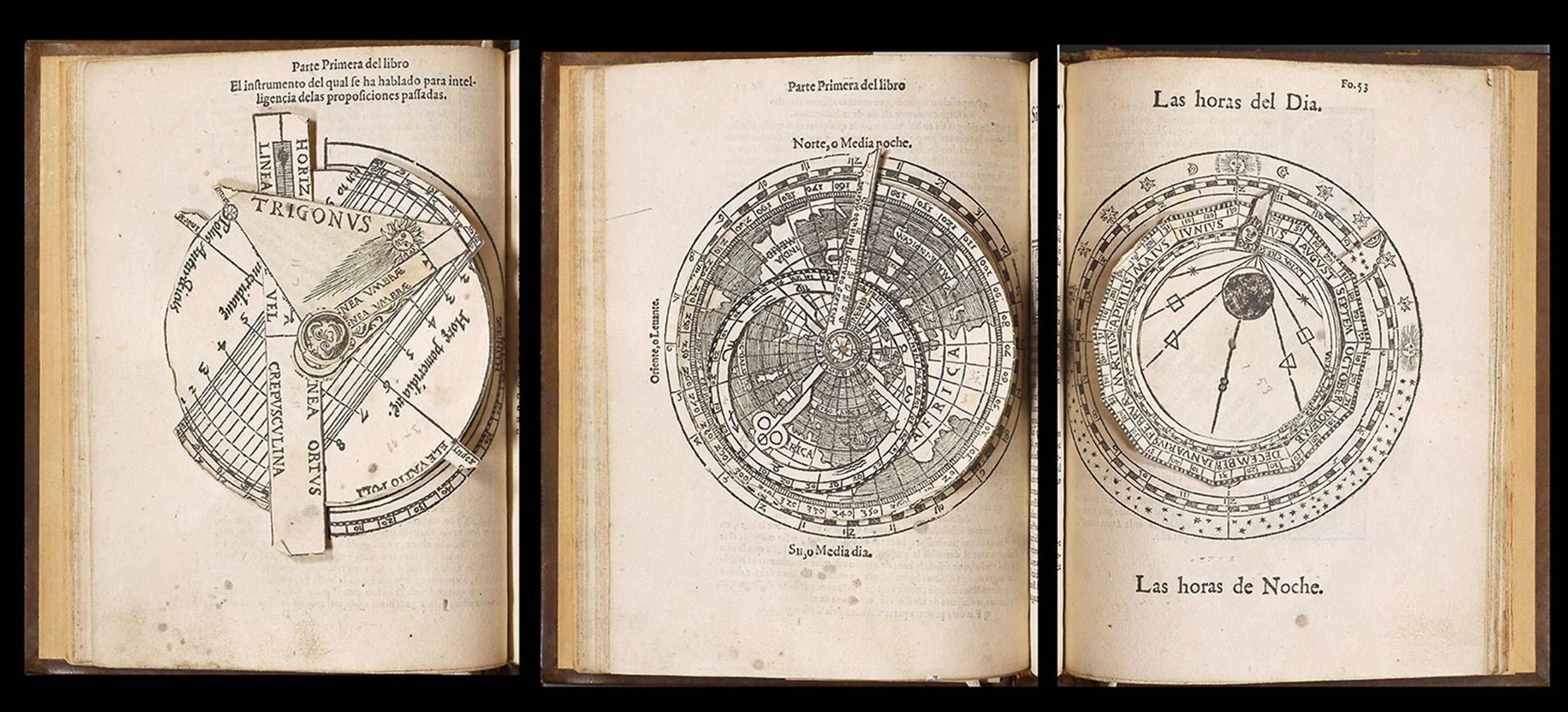
La Cosmographia de Pedro Apiano. Peter Apian. En Anvers, por Iuan Bellero al Aguila de Oro, 1575. Apian’s volvelles are quite complex, each having several different movable parts.
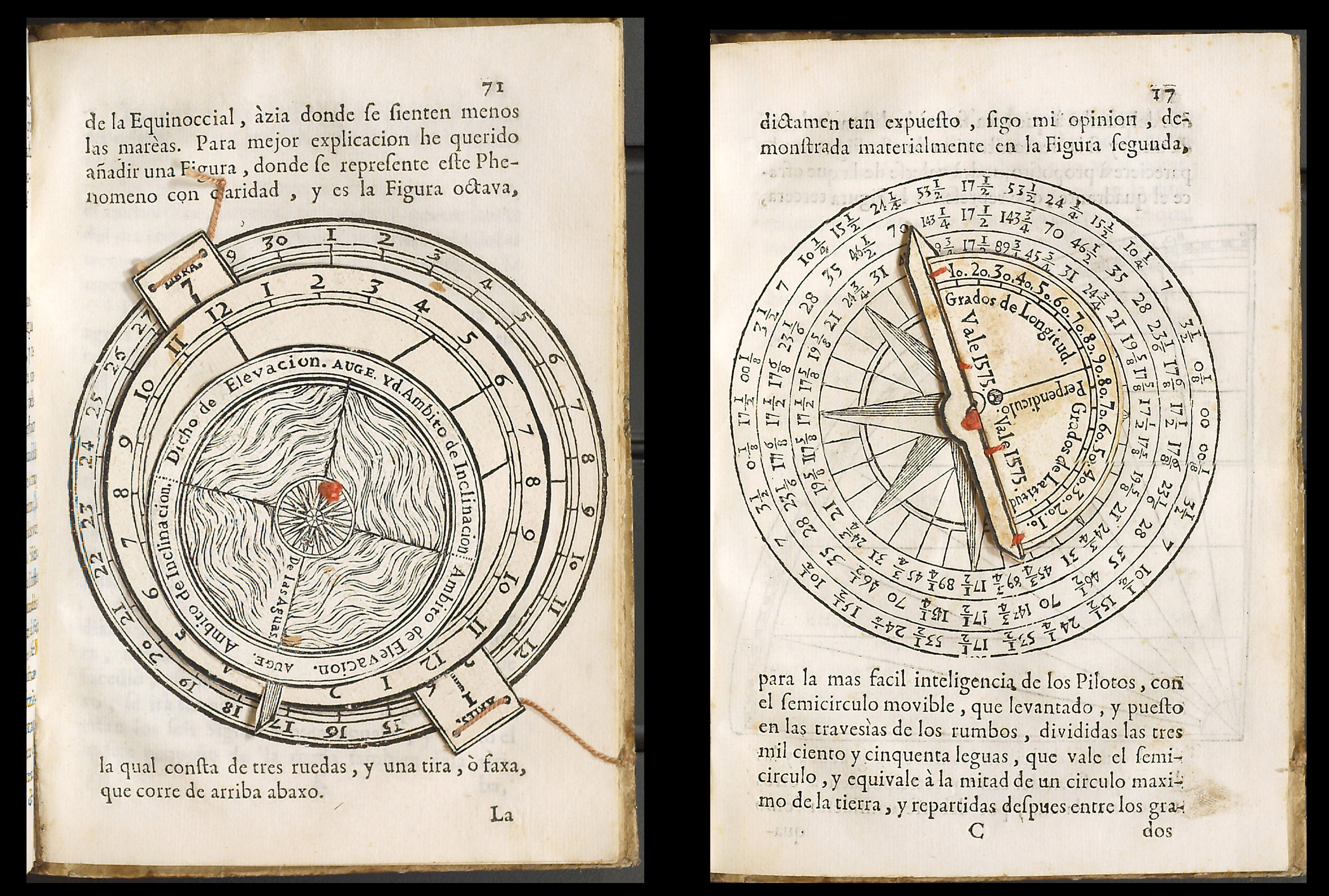
Delineacion de lo tocante al conocimiento del punto de longitud del globo de tierra, y agua, y de la causa de las crecientes, y menguantes del mar. Juan González de Urueña. En Madrid: Por Diego Miguel de Peralta, impressor y mercador de libros …, año 1740
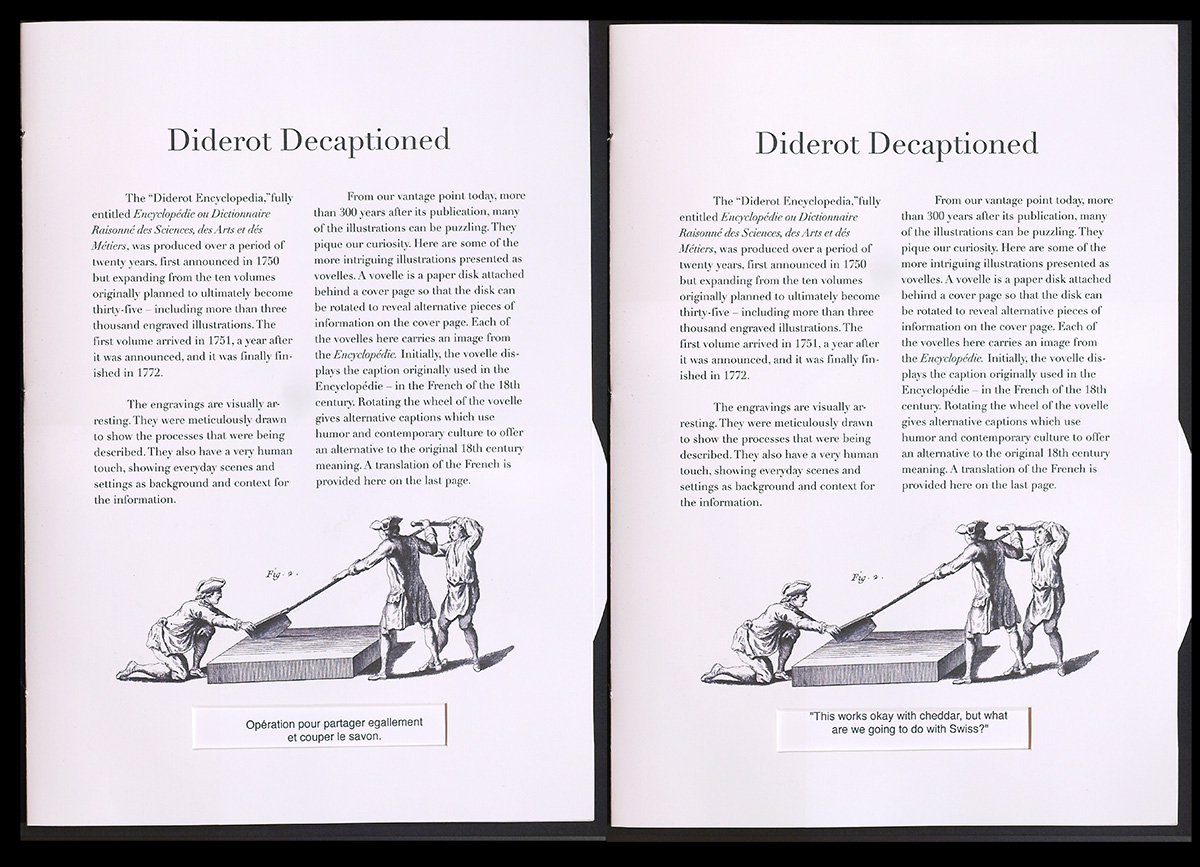
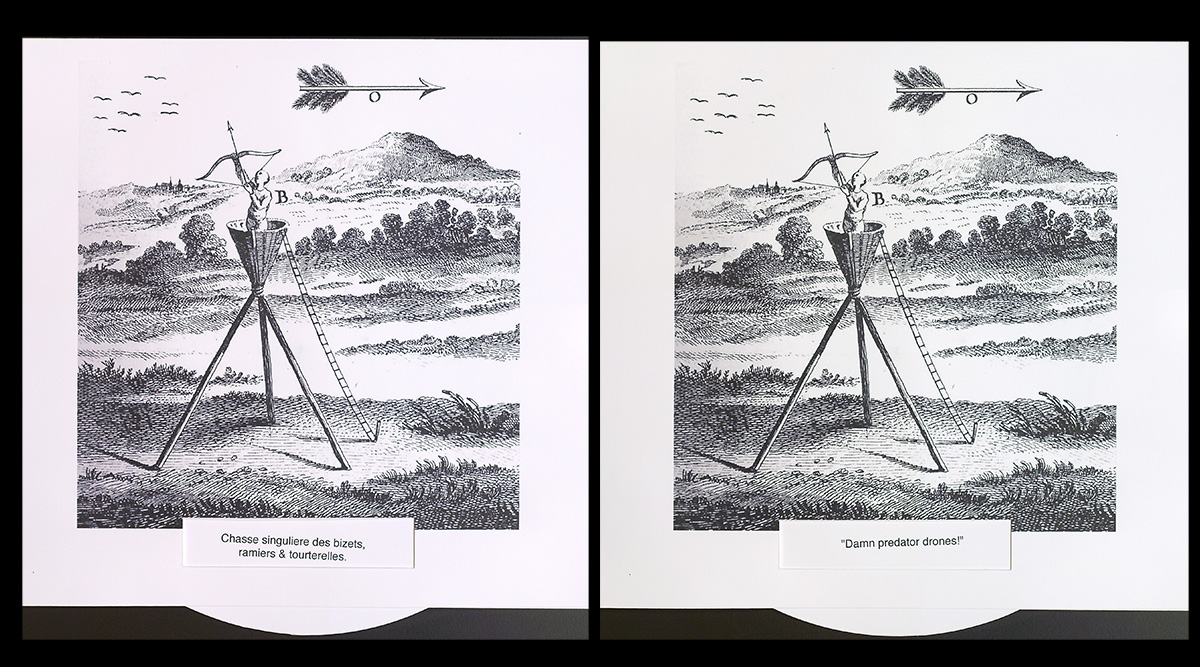
Diderot Decaptioned. Charles Hobson. [San Francisco, California]: [Pacific Editions], [2014]
In Diderot Decaptioned, notice that, different from the Early Modern volvelles, these volvelles are under the page and turn to reveal different captions for each image.

